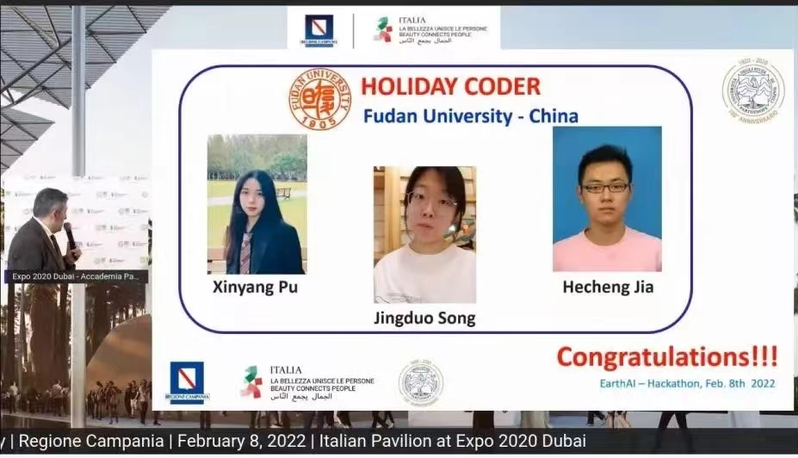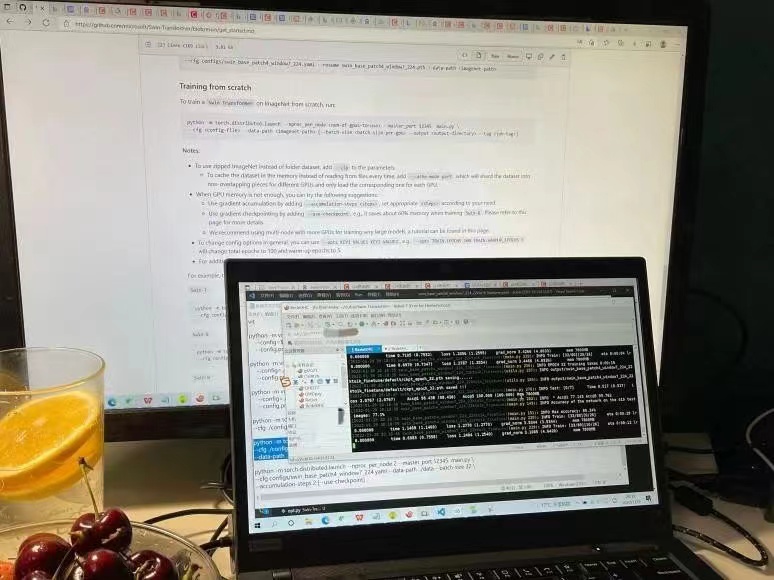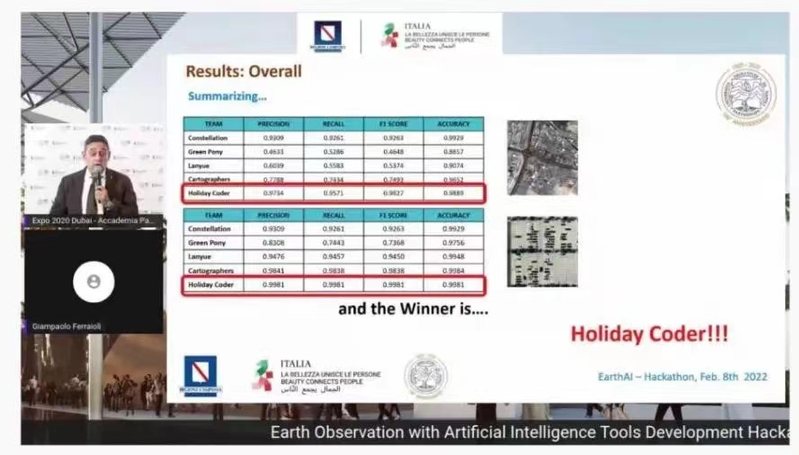Holiday Coder, a student team from the Key Laboratory of EMW Information, Fudan University, won the championship of the “Earth Observation with AI tools development Hackathon” held by the Italian Pavilion at the World Expo in Dubai on February 8.

▲Holiday Code team members
Actually, the super team consists of two master students, Xinyang Pu and Jingduo Song and a doctoral student, Hecheng Jia. They all come from the Key Laboratory of EMW Information, Fudan University, led by CAS Academician Yaqiu Jin, and are instructed by Prof. Feng Xu at the same lab.
The theme of the hackathon is artificial intelligence for image recognition and interpretation this year. It is also the first AI competition held at the World Expos. A total of 9 universities from China, Italy, the United Arab Emirates and other countries participated in this year’s competition held from January 28 to February 4.
During the first six-day training stage, the organizer provided 2,100 remote sensing images, which were divided into 21 categories, such as agricultural supplies, airplanes, beaches, buildings, jungles and houses, with 100 images for each category, and participants were required to classify the images with AI. With the optimized algorithm, members of Holiday Coder managed to realize automatic classification of the 2,100 images .
During the test stage, each team had to try hard to classify the testing images with their algorithms and submit the results to the organizer in the final which was held on February 4.
Finally, with the accuracy in all indicators, Holiday Coder outperformed their rivals and won the championship.

▲The model trained by Pu for the competition
Pu, captain of the team, looked into current mainstream recognition algorithms, and optimized the algorithm based on Swin-Transformer (a deep self-attention network based on sliding window operation hierarchy design). Song and Jia were responsible for data expansion and augmentation, a critical part for this competition, as there was very little training data for each category.
"We need to get the data augmentation done before the training stage ends." Jia said to his teammates with only two days to go, and his words motivated his teammates to work even harder in the final stretch.
Through integrating the scene classification and target recognition data they had access to in previous competitions, as well as some scene classification data sets available online, Song and Jia finally increased the size of the data set by about seven times, from 2,100 to more than 14,000 images. The data expansion and augmentation will also benefit their own research studies.
"Though the competition wrapped up quickly, I learned a lot from my two teammates, especially their persistence," said Song.
Although the hackathon was held during the Spring Festival this year, the most important festival celebrated by the Chinese people, the team members were still willing to spare their time and prepare for this competition at home.
"The opportunity to participate in a world-class competition is rare, and remote sensing image recognition based on artificial intelligence, is closely related to our research area. It was also a great opportunity for us to build up hands-on experience and improve coding ability," said Pu.
According to her, the team members could only meet online after 10 pm during the holiday due to their busy schedule of festival celebrations and family reunions, and they often had discussions as late as 1 or 2 am.

"An important reason for our championship in this competition was our lab’s previous accumulation in relevant experiences and technologies," Pu told us.
Note that there were only 100 samples for each category in the open data set of the competition, while general deep learning techniques require at least thousands of samples for each category to achieve a high level of accuracy in recognition.
In addition, it has high requirements for the level of classification. For example, residential areas need to be subdivided into sparse, medium and dense areas, which increases the difficulty of accurate classification.
Since their lab has long been devoted to studying the physical mechanism of remote sensing, integrating physical mechanism with neural network, and developing explainable and generalizable artificial intelligence, the team members could achieve the extremely high accuracy in this event.


